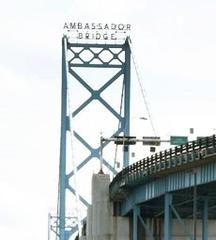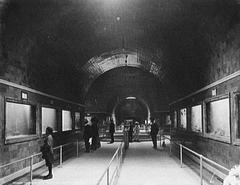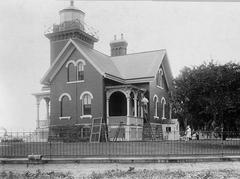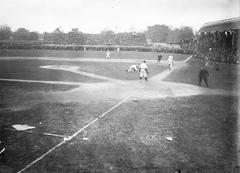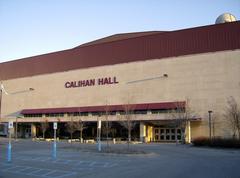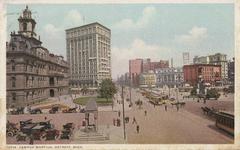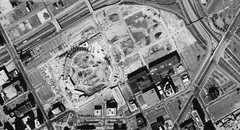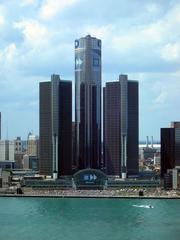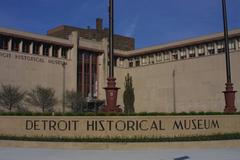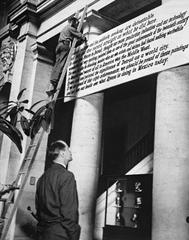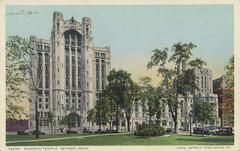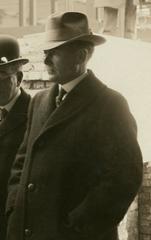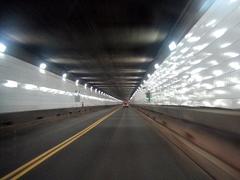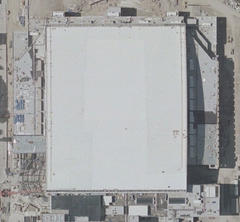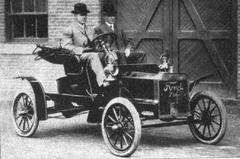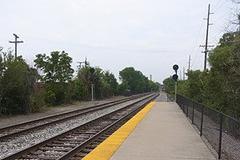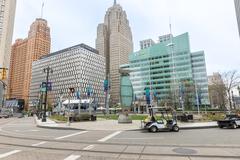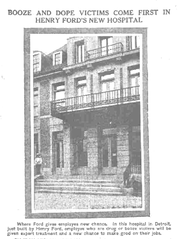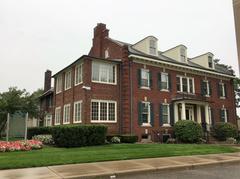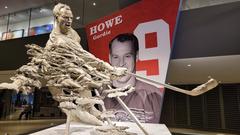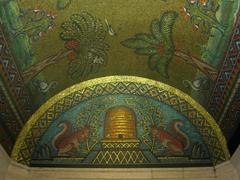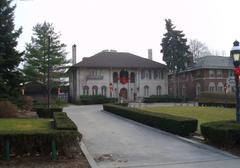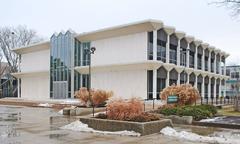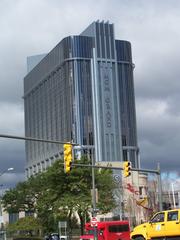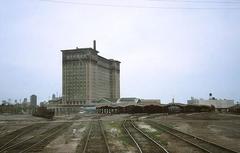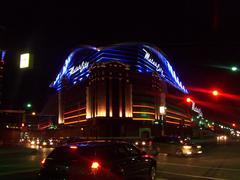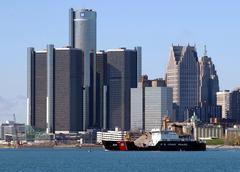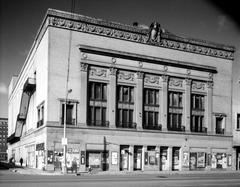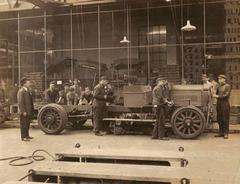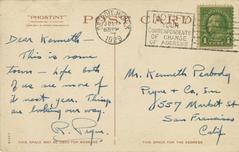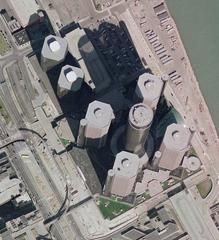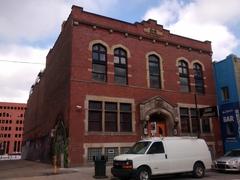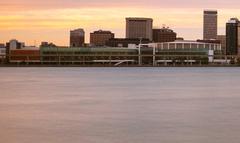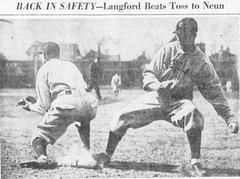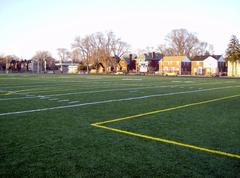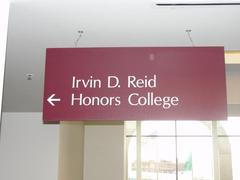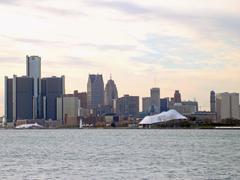
East Jefferson Avenue Residential TR Detroit: Visiting Hours, Tickets, and Historical Sites Guide
Date: 04/07/2025
Introduction to East Jefferson Avenue Residential TR in Detroit
The East Jefferson Avenue Residential Thematic Resource (TR) in Detroit, Michigan, is a living showcase of the city’s architectural grandeur, historical depth, and cultural vitality. This historic corridor traces its origins to Detroit’s earliest days, emerging after the 1805 fire as a principal artery in Judge Woodward’s city plan. Over the centuries, East Jefferson Avenue evolved from a favored residential street with antebellum homes to a symbol of Gilded Age affluence, early 20th-century urban sophistication, and modern community resilience.
The district’s architectural diversity—spanning Victorian, Tudor, Georgian Revival, and Art Deco styles—is embodied in landmarks such as the Charles Trowbridge House (1826), Somerset Apartments (1922), and the iconic Whittier Hotel complex. Visitors can freely explore this “open museum” year-round, enjoying both the architectural gems and the scenic Detroit RiverWalk, with options for guided tours from local organizations like Jefferson East, Inc. and Detroit History Tours. Its location near Belle Isle Park and downtown further enhances visitor experiences.
This comprehensive guide details the district’s historical development, key architectural features, social and cultural importance, preservation efforts, and practical information for visitors. By understanding East Jefferson Avenue’s layered past, travelers gain insight into Detroit’s broader journey of resilience and renewal. Plan your visit with the latest research and enrich your experience using virtual guides and community resources (Wikipedia; Historic Detroit; Jefferson East, Inc.; Detroit History Tours; Secret Detroit).
Contents Overview
- Early Development and Urban Expansion
- Gilded Age Prosperity and Architectural Flourishing
- Early 20th Century: Apartment Living and Urban Density
- Social and Cultural Significance
- Preservation and Modern Challenges
- Notable Landmarks and Architectural Highlights
- Visitor Information: Hours, Tickets, and Tours
- Exploring East Jefferson Avenue: Practical Visitor Guide
- Architectural Character and Notable Structures
- Socio-Cultural Impact and Lifestyle
- Accessibility and Travel Tips
- Preservation and Recognition
- Visitor Experience and Interpretive Resources
- Parks, Greenways, and Waterfront Access
- Distinct Neighborhoods and Cultural Districts
- Commercial and Cultural Landmarks
- Community Resources and Visitor Services
- Transportation and Accessibility
- Visitor Tips and FAQs
- Conclusion and Recommendations
Early Development and Urban Expansion
East Jefferson Avenue is among Detroit’s oldest and most storied thoroughfares. After the city’s devastating 1805 fire, it was reestablished as a principal route parallel to the river under Judge Woodward’s plan (Wikipedia). By the mid-19th century, the avenue flourished as an address of choice for Detroit’s growing population, valued for its river proximity and access to downtown.
Significant early structures include the Charles Trowbridge House (1826), Joseph Campau House (1835), Sibley House (1848), Beaubien House (1851), and Moross House (1855)—some of the city’s oldest surviving private residences (Wikipedia). These homes offer rare insight into Detroit’s antebellum era, as few pre-Civil War buildings remain elsewhere in the city.
Gilded Age Prosperity and Architectural Flourishing
Detroit’s late 19th-century industrial boom brought remarkable prosperity and a surge in architectural ambition. East Jefferson Avenue became home to grand mansions commissioned by industrialists and professionals, such as the Thomas A. Parker House (1868), Croul-Palms House (1881), William H. Wells House (1889), John N. Bagley House (1889), and Frederick K. Stearns House (1902) (Wikipedia). The district’s eclectic mix of Victorian, Tudor, and Georgian Revival styles reflected the cosmopolitan aspirations of its residents and the city’s growing prominence.
Early 20th Century: Apartment Living and Urban Density
With Detroit’s population explosion in the early 20th century, East Jefferson Avenue adapted to new urban realities. The construction of distinguished apartment buildings—like the Somerset Apartments (1922), designed by C. Howard Crane—ushered in higher-density living for the city’s burgeoning middle class (Historic Detroit). These structures blended historic architectural motifs with modern conveniences, and their inclusion on the National Register of Historic Places highlights their significance.
Social and Cultural Significance
The East Jefferson Avenue Residential Historic District is more than a collection of beautiful buildings—it is a living record of Detroit’s evolving communities and cultures (Let’s Detroit). The area’s development reflects key social changes, from African American migration and the rise of the auto industry to community activism in neighborhoods like Jefferson-Chalmers. Preservation of the district’s historic fabric fosters a sense of identity and continuity, vital to Detroit’s unique character (Jefferson East, Inc.).
Preservation and Modern Challenges
Despite its historic status, the district has faced threats from neglect, vacancy, and redevelopment pressures. The Somerset Apartments’ decline after its National Register listing illustrates these challenges (Historic Detroit). Yet, local organizations and residents have advocated for preservation, resulting in protections for many key structures and strengthened community engagement (Let’s Detroit).
Notable Landmarks and Architectural Highlights
Key landmarks on East Jefferson Avenue include:
- Charles Trowbridge House (1826): Detroit’s oldest known structure (Wikipedia).
- Moross House (1855): A Greek Revival gem.
- Frederick K. Stearns House (1902): A mansion reflecting Gilded Age wealth.
- Somerset Apartments (1922): A Georgian Revival landmark in apartment living (Historic Detroit).
- Whittier Hotel (1923/1926): A luxurious apartment-hotel complex with Italian gardens (Historic Detroit; Detroit City Report PDF).
Visitor Information: Hours, Tickets, and Tours
- District Hours: Outdoor areas are accessible year-round during daylight. Interior access is limited; most historic homes are private.
- Tickets: No entry fees for general exploration; some special events or tours require tickets—check with local organizations.
- Tours: Guided walking tours are offered seasonally by groups like Detroit History Tours and Jefferson East, Inc..
- Accessibility: Sidewalks, bike lanes, and public transit serve most of the district; not all interiors are wheelchair accessible.
- Tips: Wear comfortable shoes, respect private property, and combine your visit with nearby attractions such as Belle Isle Park and the RiverWalk.
Exploring East Jefferson Avenue: Practical Visitor Guide
Architectural Character and Notable Structures
The district features an array of architectural treasures, including mansions, stately apartment buildings, and the renowned Whittier Hotel. The Whittier, designed by Charles N. Agree, is an example of early 20th-century luxury, complete with Italian gardens, arched promenades, and riverfront vistas (Historic Detroit; Detroit City Report PDF). Nearby, buildings like the Wardell (Park Shelton) and Belcrest add to the architectural richness.
Socio-Cultural Impact and Lifestyle
East Jefferson Avenue’s apartment hotels and grand residences once catered to Detroit’s elite, blending residential comfort with hotel amenities. Ballrooms, lounges, and river views created a vibrant, exclusive community, while the district’s landscaped grounds reflected urban planning trends that emphasized green space and waterfront integration.
Accessibility and Travel Tips
- Getting There: Reachable via car, bus, or bike; ample street parking and public transit options.
- Nearby Attractions: The Detroit Institute of Arts, Belle Isle Park, and RiverWalk are all easily accessible.
- Safety: Generally safe during the day, especially near the riverfront and revitalized areas; use standard urban precautions.
Preservation and Recognition
As a National Register-listed district, East Jefferson Avenue benefits from ongoing preservation efforts, ensuring that its architectural and cultural legacy remains intact (Detroit City Report PDF).
Visitor Experience and Interpretive Resources
Guided tours, scenic walks, and photography opportunities abound. Digital resources, interactive maps, and virtual tours offered by local organizations enhance the visitor experience.
Parks, Greenways, and Waterfront Access
- Detroit International RiverWalk: Over three miles of riverfront promenade, open 24/7, wheelchair accessible, and free (Secret Detroit).
- William G. Milliken State Park and Harbor: 31-acre park with lighthouse and marina, open dawn to dusk.
- Belle Isle Park: 982-acre island park with attractions and a $10 vehicle entry fee (MichBnB).
- Dequindre Cut Greenway: Two-mile urban path featuring murals and public art, open dawn to dusk.
Distinct Neighborhoods and Cultural Districts
- Lafayette Park: Features the Mies van der Rohe Residential District—a modernist masterpiece.
- Marina District: Popular for boating, photography, and riverfront views.
- Jefferson-Chalmers: Known for historic homes, canals, and community activism (Jefferson East, Inc.).
Commercial and Cultural Landmarks
- Eastern Market: Accessible via Dequindre Cut, offers vibrant farmers’ markets and events (Secret Detroit).
- GM Renaissance Center: Iconic riverfront complex with shops and restaurants.
- Spirit of Detroit and Guardian Building: Architectural icons open for tours and public viewing.
Community Resources and Visitor Services
Jefferson East, Inc. provides neighborhood information, housing support, and community services (Jefferson East, Inc.). Numerous parks, boat launches, and fishing piers are scattered along the avenue, most of which are wheelchair accessible and open year-round.
Transportation and Accessibility
East Jefferson Avenue is conveniently accessible by car, bus, bike, and on foot. It lies close to downtown and is served by several DDOT routes, with MoGo bike-share stations and ample parking (Jefferson Avenue (Detroit)).
Visitor Tips and FAQs
- Best Time to Visit: Summer and early fall for optimal weather.
- Parking: Street and lot parking are available near major parks and attractions.
- Safety: Exercise standard precautions; neighborhoods near the riverfront have seen significant revitalization.
- Photography: Top spots include the RiverWalk, Belle Isle, and historic facades.
- Events: Check community calendars (Visit Detroit) for festivals and special tours.
FAQs
- Is the district open year-round? Yes, outdoor areas are always accessible; individual attractions may have specific hours.
- Are guided tours available? Yes, offered seasonally by local organizations.
- Are homes open to the public? Most are private; occasional open houses occur.
- Is the area wheelchair accessible? Most public spaces and paths are accessible.
Visuals and Media Recommendations
High-quality images of the RiverWalk, Alden Park Towers, Belle Isle, and historic mansions are recommended. Include descriptive alt text for SEO, such as “East Jefferson Avenue historic mansion” or “Detroit RiverWalk waterfront views.” Interactive maps and virtual tours enhance the visitor experience.
Conclusion and Recommendations
East Jefferson Avenue is a vibrant tapestry of Detroit’s architectural splendor, waterfront beauty, and resilient communities. From historic mansions to scenic parks, the district offers immersive experiences for architecture lovers, history enthusiasts, and urban explorers alike. Use this guide to plan your visit—enjoy walking tours, discover local cuisine, and connect with Detroit’s unique past and present.
Ready to explore East Jefferson Avenue? Download the Audiala app for guided tours, live event updates, and interactive maps. Follow us on social media for insider tips and stories from Detroit’s historic neighborhoods.
Sources and Further Reading
- National Register of Historic Places listings in Detroit, Wikipedia
- Somerset Apartments, Historic Detroit
- Preserving Neighborhood Histories: Detroit’s Historic Districts, Let’s Detroit
- Jefferson East, Inc. Neighborhoods
- Whittier Hotel Detroit, Historic Detroit
- Whittier Hotel Historic District Final Report, Detroit City Report PDF
- East Jefferson Avenue Residential TR, Wikipedia
- Secret Detroit - Things to Do in Detroit
- Garden Court Condominiums, Wikipedia
- EJDevCo - East Jefferson Development Company
- Detroit History Tours
- Visit Detroit - Detroit Riverfront

